Events
| Name | organizer | Where |
|---|---|---|
| MBCC “Doing Business with Mongolia seminar and Christmas Receptiom” Dec 10. 2025 London UK | MBCCI | London UK Goodman LLC |
NEWS
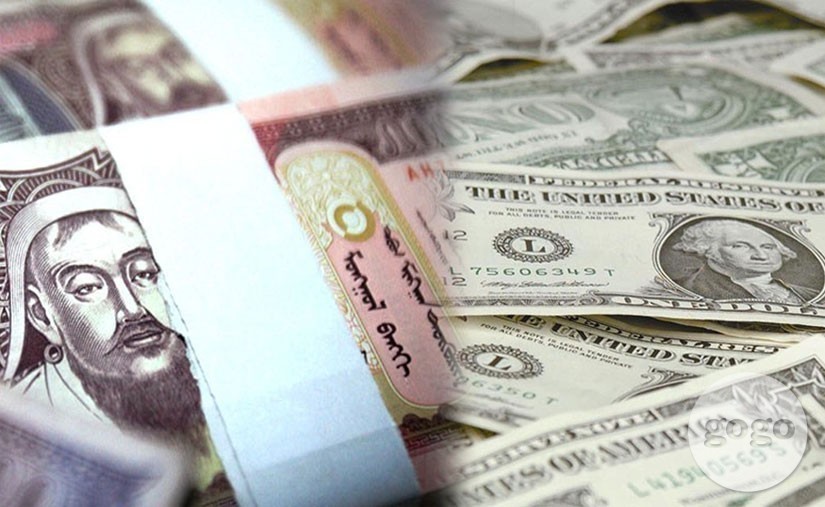
Working Group Established to Intensify Implementation of Law on National Sovereign Wealth Fund www.montsame.mn
The Law on National Sovereign Wealth Fund was adopted on April 19, 2024. Prime Minister of Mongolia Zandanshatar Gombojav met with officials to discuss matters such as the implementation of the law, revenue collection of the fund, oversight systems, negotiations on determining the state ownership percentage of strategic mineral deposits, and distribution of natural resource benefits to citizens through the fund. At the outset of the meeting, the Prime Minister noted that the Government’s National Wealth Fund policy must continue.
Taking the Constitution of the Kingdom of Norway as a model, Article 6.2 of the Constitution of Mongolia states that “the exploitation of the mineral deposits with the strategic importance shall be in compliance with the principle, under which natural wealth is to be subject to the people's control/power, and the legal basis to allot a majority of the benefits gained from it to the people shall be determined by laws." Prime Minister Zandanshatar Gombojav, emphasizing the inadequate implementation of Article 6.2 of the Constitution and the Law on National Sovereign Wealth Fund, established a Working Group led by the Minister of Mongolia and the Chief Cabinet Secretariat of the Government of Mongolia, Mr. Byambatsogt Sandag, aimed at intensifying the implementation of these laws. The Prime Minister stated that negotiations will be conducted to channel the revenues from strategic mineral deposits, explored with state budget funds, into the National Wealth Fund. If necessary, administrative measures will be taken, and a state representative will be appointed to each of the 16 strategic deposits.
Law enforcement and regulatory agencies are currently investigating how and through what processes strategic mineral deposits, explored using state budget funds, were transferred into private ownership, and whether any legal violations occurred during this process. The scope of the investigation has been expanded by establishing a joint sub-working group comprising the police, the intelligence agency, and the Independent Authority Against Corruption of Mongolia.
The Prime Minister assigned the Working Group to prepare a proposal to revise the relevant laws and present it for discussion at the autumn session of the State Great Khural (Parliament) of Mongolia, stressing the focus on ensuring citizens’ ownership of the legally designated shares of strategic mineral deposits and launching IPOs on the stock exchange to distribute the benefits to the public.
The Ministry of Finance and the Bank of Mongolia were instructed to jointly conduct a profitability assessment. The Prime Minister stated that a model must be developed that calculates the returns of the Savings Fund and the Future Heritage Fund, ensures economic benefits to the country with minimal risk, and supports solutions for pressing social issues, particularly the housing policy for citizens. Additionally, the Working Group was instructed to present the progressive and special mineral resource usage fee rates together with the comprehensive tax reform package.
It was decided that the Working Group, aimed at intensifying the implementation of the Law on the National Sovereign Wealth Fund, will work in five sub-working groups handling legal and financial matters, as well as strategic mineral deposits.
Prime Minister Zandanshatar Gombojav asserted that the returns of the National Sovereign Wealth Fund must increase, with transparent information accessible to the public and responsible monitoring. The Prime Minister assigned the Working Group to drive bold and innovative changes to implement the Sovereign Wealth Fund program, to work proactively and courageously to bring tangible improvements to the lives of the people, and to report initial results in ten days.
Minister of Mongolia and the Chief Cabinet Secretariat of the Government of Mongolia Byambatsogt Sandag, Chief Executive Officer of “Erdenes Mongol” LLC Narantsogt Sanjaa, Governor of the Bank of Mongolia Lkhagvasuren Byadran, and relevant officials from the Ministry of Finance, the Ministry of Industry and Mineral Resources, and the Ministry of Family, Labour, and Social Protection participated in the meeting.
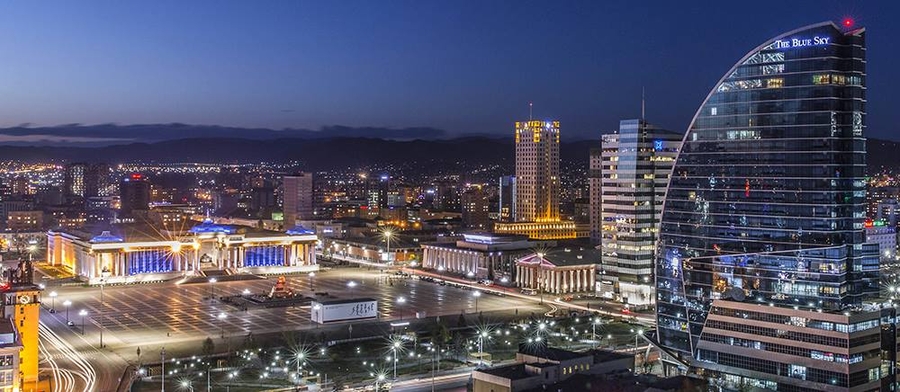
Mongolia Growth Group Announces Plan to Return Capital to Shareholders www.finance.yahoo.com
Mongolia Growth Group Ltd. (TSX-V:YAK, "MGG" or the "Company") announces that following a strategic review of its operations and capital structure, the Board of Directors has determined to consider various structures so that substantially all of the net assets of the company are returned to shareholders. A new letter to shareholders from Chairman and CEO of MGG, Harris Kupperman, providing additional context on the Company's decision and next steps, has been posted on the Company's website at www.mongoliagrowthgroup.com.
The Company intends to engage tax and legal counsel to best assess the method of effecting the return to shareholders.
The total amount returned to shareholders is subject to final asset sales, severances, tax reserves, regulatory clearances and any other expenses and may be completed in one or more steps.
As of June 30, 2025, the Company holds the following assets:
Approximately CAD $31.0 million - $33.0 million in cash, marketable securities and net working capital
A furnished commercial office property in Puerto Rico, with a cost basis excluding depreciation of approximately CAD $2.0 million
Full ownership of KEDM, an event-driven data subscription business
A portfolio of Russian securities, carried at a zero value due to ongoing sanctions
The Company is actively seeking buyers for its Puerto Rican real estate, KEDM, and, if feasible, its Russian securities. Parties interested in acquiring these assets are invited to submit non-binding offers, with the goal of achieving the maximum proceeds for shareholders.
In connection with the sale of the Puerto Rican property, Harris Kupperman, Chairman and CEO, has indicated his interest in acquiring the asset at a premium to the higher of the Company's cost basis or the result of an independent third-party property valuation, which is currently in progress. Any related-party transaction will be reviewed by the independent board members and will be subject to minority shareholder approval in accordance with TSXV Policy 5.9 and Multilateral Instrument 61-101, unless an exemption is available.
The Company is also in discussions with a third party regarding a potential sale of KEDM and will continue to entertain competing offers for all assets.
In light of the proposed strategic plan, the Company has paused its Normal Course Issuer Bid (NCIB) effective immediately. The Company had 25,458,699 shares outstanding as of August 4, 2025.
A committee of independent directors-Jim Dwyer, Brad Farquhar, and Rob Scott-has been appointed to oversee the Company's asset disposition and capital return process. The Board and management will be working closely with legal and tax advisors to ensure that any capital returned is done in a timely and tax-efficient manner, and consistent with shareholder interests. Any asset disposition will be subject to the Company obtaining all necessary regulatory, shareholder and third-party approvals, including the approval of the TSX Venture Exchange.
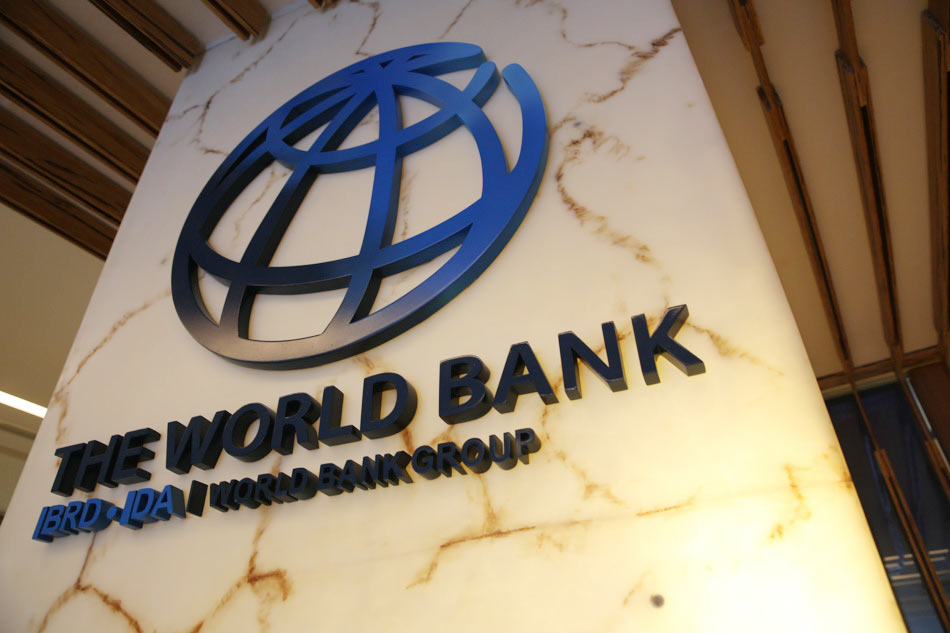
World Bank Urges Fiscal Reforms for Mongolia's Growth www.miragenews.com
A new World Bank report highlights the opportunity of the current mining boom to strengthen fiscal policy by advancing critical fiscal reforms in Mongolia.
Following three challenging years marked by overlapping external shocks, Mongolia has emerged with improved fiscal and macroeconomic outcomes, according to the Mongolia Public Finance Review, titled "Making this time different: Fiscal reforms for stable, sustainable, and inclusive development." Robust growth, driven by strong coal exports, has led to reduced public debt and increased external buffers while proactive debt management helped ease rollover risks, resulting in narrower bond spreads and higher sovereign credit ratings.
Despite these improvements, some underlying fiscal vulnerabilities persist. The influx of mining revenue has supported expansionary public spending, with expenditure as a share of GDP exceeding pre-pandemic levels and peer benchmarks. Quasi-fiscal operations-such as the subsidized housing mortgage scheme and off-budget transfers through state-owned enterprises-add to expansionary policies and could risk undermining recent progress.
The report identifies opportunities to enhance the efficiency of public spending. Mongolia's social assistance system contributes significantly to poverty and inequality reduction, but the system is expensive and targeting could be improved. Enhancing more equitable access to health and education while addressing disparities across regions and income groups would lay the foundation for better human capital outcomes, not just for improved well-being, but also for stronger future growth. Public investment could benefit from improved prioritization, planning and oversight, especially given the government's objective of scaling up infrastructure investment to boost future growth under the government's New Recovery Policy and action program. Although revenues are strong, tax reforms could broaden the tax base away from heavy reliance on mining revenues while enhancing progressivity and making the tax system more growth-friendly.
Such reforms would help further stabilize the economy, ease inflationary and external pressures, and create space for investments in physical and human capital. "Mongolia stands at a pivotal moment. The current economic boom creates a unique opportunity to strengthen the country's fiscal position, but also risks repeating past boom-bust cycles if reforms are delayed," said Taehyun Lee, World Bank Country Manager for Mongolia. "Now is the time to strenghten fiscal foundations, improve spending efficiency, and create space for sustainable and inclusive growth. The recently approved amended budget reflects the government's efforts to maintain fiscal prudence in the face of revenue volatility and global uncertainty."
/Public Release. This material from the originating organization/author(s) might be of the point-in-time nature, and edited for clarity, style and length. Mirage.News does not take institutional positions or sides, and all views, positions, and conclusions expressed herein are solely those of the author(s).View in full here.
...
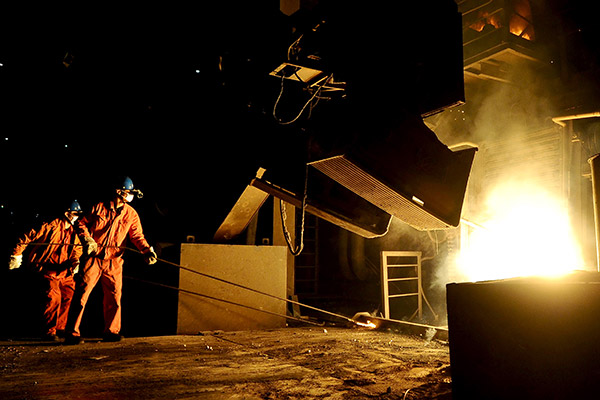
Darkhan Metallurgical Plant Reports Profit of MNT 36.7 Billion in First Half of 2025 www.montsame.mn
Minister of Industry and Mineral Resources Damdinnyam Gongor has instructed the acceleration of the implementation of the "Mongolian Steel Complex-1" project at the Darkhan Metallurgical Plant LLC.
The Government of Mongolia has resolved to establish a smelting facility at the Darkhan Metallurgical Plant, with an annual production capacity of at least one million tons of steel products. Minister of Industry and Mineral Resources Damdinyam Gongor and accompanying officials have reviewed the operations of the Plant and the preparatory progress of the project.
Chief Executive Officer of Darkhan Metallurgical Plant LLC, B. Chagnaadorj, reported, “In the first half of 2025, the company had planned to generate a net profit of MNT 21.8 billion. However, we have exceeded expectations with a net profit of MNT 36.7 billion. Furthermore, while MNT 37.9 billion was projected to be paid to the state and local budgets in the form of taxes, fees, and levies, actual contributions reached MNT 51.7 billion. All key performance indicators outlined in our business plan have been fully achieved.”
Minister Damdinyam instructed the management of the Plant to expedite the implementation of the Mongolian Steel Complex-1 project and to resolve land management and other related issues promptly. The Minister affirmed that the Government will provide full support for the project’s advancement.
The Plant aims to expand its steel production based on the proven reserves of the Tumurtei deposit and to manufacture high-quality, internationally certified products. The company aims to implement its investment plan in phases and commission the full operations of the complex by 2028.
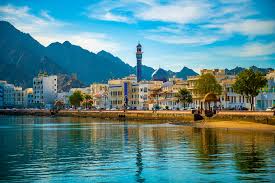
Oman-Mongolia Investment Partnership: Opportunities and Implications for Your Business Growth www.omanet.com
Abdulsalam bin Mohammed al Murshidi, President of the Oman Investment Authority, led a delegation to Ulaanbaatar for high-level discussions with Mongolia’s Prime Minister Gombojav Zandanshatar.
During their meeting, Prime Minister Zandanshatar emphasized Mongolia’s eagerness to strengthen relations with the Sultanate of Oman, highlighting a shared interest in developing a practical partnership focused on mutual investment benefits across key sectors.
Al Murshidi underscored the need to enhance bilateral cooperation not only in investments but also in other areas of common interest.
The Omani delegation participated in a series of official discussions with various Mongolian officials, including:
Damdinnyam Gungor, Minister of Industry and Mineral Resources
Batkhuu Edesh, Secretary General of the Ministry of Economy and Development
Ganbold Bata, Advisor and Head of the Office of the Deputy Prime Minister
V Enkhbaatar, Director General of the Investment and Trade Agency
T Munkhtor, Advisor to the Minister of Food, Agriculture and Light Industries
Conversations centered on potential investment opportunities in mining, energy, agriculture, and food production. Both sides explored possibilities for joint projects and trade facilitation, aiming to create an environment conducive to long-term investments.
The two parties agreed to enhance technical-level dialogues in the near future to establish executive frameworks for bilateral cooperation.
This official visit underscored the mutual aspiration of Oman and Mongolia to build a broad, sustainable strategic partnership, reflecting significant potential for collaboration across economic and developmental sectors.
The discussions were attended by Shaikh Abdulaziz bin Abdullah al Hinai, Ambassador-at-Large at the Ministry of Foreign Affairs, along with senior officials from both nations. — ONA
Special Analysis by Omanet | Navigate Oman’s Market
The recent high-level discussions between Oman and Mongolia highlight a strategic shift for businesses in Oman, opening avenues for investment in mining, energy, agriculture, and food production. This partnership not only presents a unique opportunity for diversification but also poses potential risks related to market adaptability and project execution in a new geopolitical landscape. Smart investors and entrepreneurs should consider delving into Mongolia’s evolving sectors, leveraging bilateral agreements to maximize growth while remaining vigilant of regional dynamics.
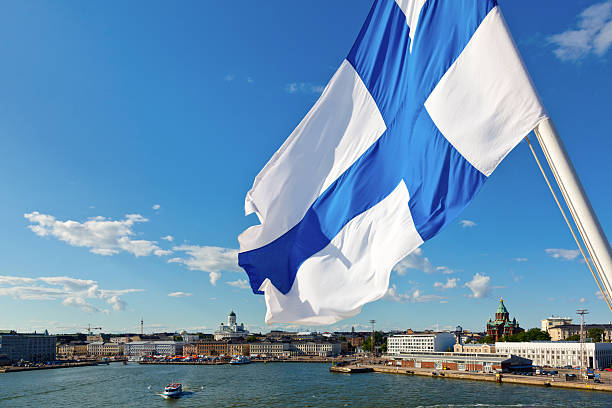
Mongolia and Finland to strengthen cooperation within UN, other international organizations www.qazinform.com
Minister of Foreign Affairs of Mongolia Battsetseg Batmunkh held official talks with Minister of Foreign Affairs of the Republic of Finland Elina Valtonen as part of her official visit to the Republic of Finland on August 1, 2025, reported the Ministry of Foreign Affairs, MONTSAME reports.
During the meeting, the two sides emphasized the dynamic development of the traditional friendly relations between Mongolia and the Republic of Finland, grounded in shared values such as mutual trust, democracy, human rights, and the rule of law. The two sides discussed possibilities for expanding cooperation in the sectors of economy, investment, renewable energy, forestry, green technology, environment, education, culture, and tourism. The Ministers of Foreign Affairs of the two countries reaffirmed their commitment to strengthening cooperation within the framework of the United Nations and other international organizations, sharing views on matters concerning regional and international affairs.
The Ministers highlighted the importance of upholding the Helsinki Principles and commitments within the Organization for Security and Co-operation in Europe (OSCE), agreeing upon further strengthening collaboration in this area. Concluding the official talks, the Ministers of Foreign Affairs of Mongolia and the Republic of Finland issued a Joint Statement.
Earlier, it was reported Mongolia and Kazakhstan are set to expand inter-parliamentary cooperation.
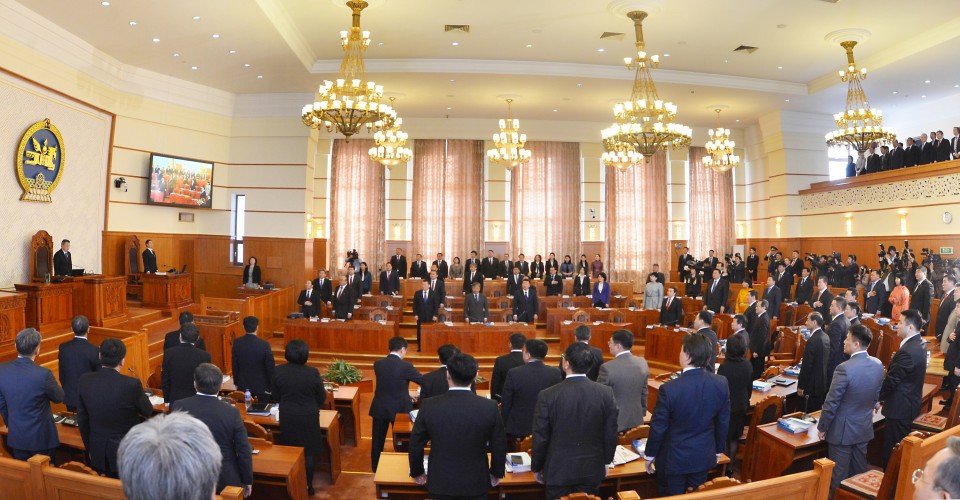
Inter-Parliamentary Union to support Mongolia's efforts to enhance gender equality www.akipress.com
Chairman of the Parliament of Mongolia Amarbayasgalan Dashzegve and President of the Inter-Parliamentary Union (IPU) Tulia Ackson held an official meeting on July 31, Montsame reported with reference to the Media and Public Relations Department of the Parliament of Mongolia.
The Chairman of the Parliament of Mongolia expressed gratitude for the cooperation with and support from the IPU and member countries in strengthening democracy and refining legislative activities.
Amarbayasgalan Dashzegve highlighted that, following the mixed electoral system implemented according to the revised Constitution of Mongolia, the number of Parliament Members increased to 126, 32 of whom are women, noting that this made Mongolia one of the leading countries in Asia in terms of women's participation in Parliament, marking notable progress toward achieving the goals set by the IPU.
Chairman Amarbayasgalan stated that an initiative proposal is under preparation to establish an advisory body on Land Degradation and Desertification under the Standing Committee on Sustainable Development of the IPU in connection with the 17th Session of the Conference of the Parties (COP17) to the United Nations Convention to Combat Desertification (UNCCD) to be held in Mongolia, expressing confidence that the IPU will actively support this initiative.
President of the IPU Tulia Ackson emphasized the IPU's support for Mongolia's efforts to enhance gender equality, noting that cooperation between Parliaments and the IPU plays a vital role in fostering an equal and accessible future for all.
President Tulia Ackson, who works focusing on matters of strengthening women and enhancing gender equality, asserted that the IPU will support the initiative reflected in the strategic plan of the Mongolian Parliament aimed at safeguarding human rights and creating a people-centered legal environment.

Gold purchase by Mongolia's central bank down 24.1 pct www.xinhuanet.com
Mongolia's central bank purchased seven tons of gold from legal entities and individuals in the first seven months of 2025, marking a 24.1-percent decrease compared to the same period last year, according to the Bank of Mongolia on Monday.
As of July, average price of gold purchased by the Bank of Mongolia was 384,712.91 Mongolian tugriks (about 107.1 U.S. dollars) per gram.
Purchasing gold is one of key ways for the central bank to ensure the country's economic stability by consistently increasing foreign currency reserves, said the bank.
Mongolia's foreign exchange reserves have risen to 5.206 billion dollars in the first half of 2025.
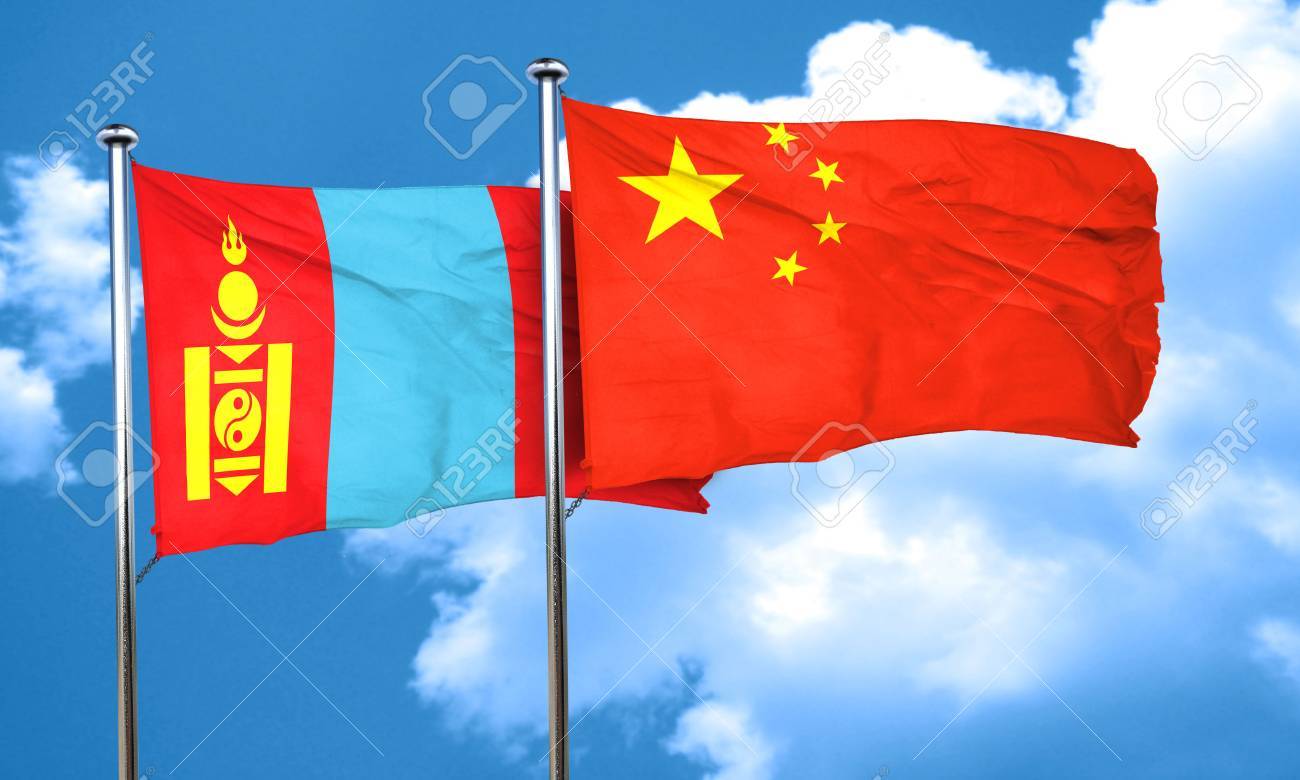
Feature: Enthusiasm for learning Chinese increasing in Mongolia www.xinhuanet.com
In the early morning of Ulan Bator, capital of Mongolia, 19-year-old Mongolian university student Enkhbat arrives early at the examination venue for the Chinese Proficiency Test, ready to assess his Chinese language skills.
"I'm in my sophomore year and hope to use this test to evaluate my Chinese proficiency in preparation for studying abroad," Enkhbat said. Hailing from Khentii Province, his parents are herders, and a chance encounter led him to the Chinese language.
In the summer of 2023, Enkhbat traveled to Ulan Bator with his father to sell cashmere products, where they encountered a businessman from China. Unfortunately, without a translator, neither Enkhbat nor his father could comprehend the Chinese spoken by the businessman, leading to an unsuccessful negotiation that left his father feeling regretful.
That day, his father patted him on the shoulder and said, "You need to learn Chinese when you go to university."
At university, Enkhbat chose to major in Chinese, planning to study further in Shanghai after graduation. "China has a huge market, and the potential for China-Mongolia trade is immense," Enkhbat noted.
Currently, there is a growing number of young people in Mongolia, like Enkhbat, keen on learning Chinese. Cheng Shengli, the Chinese director of the Confucius Institute at the National University of Mongolia, said that among foreign language learners in Mongolia, those studying Chinese rank second after English.
There are 18 national primary and secondary schools as well as over 40 private schools offering Chinese courses in Mongolia, with more than 150 other schools planning to introduce Chinese language programs.
The Confucius Institutes at the National University of Mongolia and the Mongolian State University of Education, as well as several Confucius classrooms and teaching centers, have become important platforms for Chinese language education and cultural exchange between China and Mongolia.
Khishig Chinese Language Comprehensive Secondary School in Ulan Bator has implemented Chinese language courses. Teacher Jiyaa said that students enjoy learning Chinese, singing Chinese songs, and following Chinese television dramas, resulting in remarkable improvements in their Chinese proficiency.
The "Chinese Bridge" contest, a Chinese proficiency competition for foreigners, has also sparked Mongolian students' enthusiasm for learning Chinese.
Middle school student Hulan from Tsaikhun Secondary School in Darkhan-Uul Province said, "'Chinese Bridge' is like a mirror, reflecting my progress in Chinese while revealing the many treasures hidden within the language."
Throughout the years, many students in Mongolia have shown a deep enthusiasm for the competition, viewing their preparation and participation as valuable opportunities to improve their language skills.
Cheng said that the "Chinese Bridge" is not just a competition; it serves as a gateway for Mongolian students to immerse themselves in the Chinese language, allowing them to experience the beauty of the language and the vast opportunities for cultural exchange between the two nations.
...
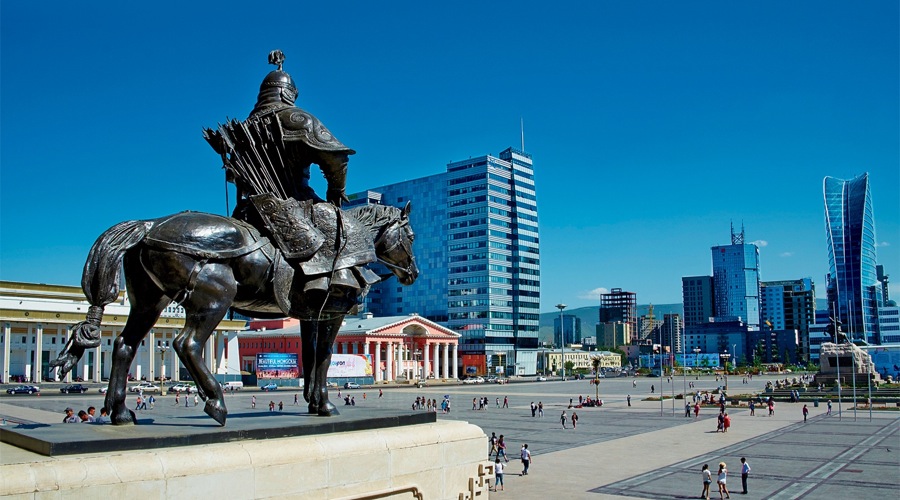
Mongolia Reaffirms Commitment to Democratic Governance and Inclusive Representation www.montsame.mn
Speakers of Parliament from 84 countries, 18 Deputy Speakers, and Members of the Inter-Parliamentary Union (IPU) are discussing how to promote responsibility in international relations, support democracy, steer parliamentary diplomacy toward peace and mutual understanding, amplify citizens' voices within the United Nations, and deliver tangible outcomes on international commitments.
Chairman of the State Great Khural of Mongolia Amarbayasgalan Dashzegve delivered remarks during the General Debate themed “A World in Crisis: Parliamentary Cooperation and Multilateralism for Peace and Justice for All.”
Chairman Amarbayasgalan emphasized the importance of equal participation by countries with diverse characteristics, cultures, traditions, customs, and values in shaping a new world order and building a truly multipolar global system.
Chairman of the State Great Khural of Mongolia further underlined that Mongolia adheres to an independent, open, peaceful, and multi-pillar foreign policy, and resolving any challenges through harmony and dialogue is essential to strengthening global peace and security. In this context, Chairman Amarbayasgalan presented Mongolia’s recent Constitutional Amendments aimed at reinforcing parliamentary governance and ensuring equitable participation of various social groups. These include increasing the number of Members of Parliament to 126 and introducing a mixed electoral system. As a result of these reforms, the number of female MPs has risen to 32 — an achievement aligned with the targets set by the Inter-Parliamentary Union.
Chairman Amarbayasgalan also noted that the State Great Khural of Mongolia, in approving its 2024–2028 Strategic Plan, introduced a human-centered “Three Pillars of Excellence” Initiative, reflecting its commitment to human rights and the rule of law, and expressed confidence that these efforts will further consolidate the foundations of a democratic society.
Chairman Amarbayasgalan Dashzegve concluded by reaffirming that Mongolia regards democratic and representative systems based on multilateral cooperation and public participation as essential to peace and stability. Mongolia will continue to fulfill its commitments to the international community and work steadfastly with the IPU and global parliaments to build a more peaceful future.
- «
- 1
- 2
- 3
- 4
- 5
- 6
- 7
- 8
- 9
- 10
- 11
- 12
- 13
- 14
- 15
- 16
- 17
- 18
- 19
- 20
- 21
- 22
- 23
- 24
- 25
- 26
- 27
- 28
- 29
- 30
- 31
- 32
- 33
- 34
- 35
- 36
- 37
- 38
- 39
- 40
- 41
- 42
- 43
- 44
- 45
- 46
- 47
- 48
- 49
- 50
- 51
- 52
- 53
- 54
- 55
- 56
- 57
- 58
- 59
- 60
- 61
- 62
- 63
- 64
- 65
- 66
- 67
- 68
- 69
- 70
- 71
- 72
- 73
- 74
- 75
- 76
- 77
- 78
- 79
- 80
- 81
- 82
- 83
- 84
- 85
- 86
- 87
- 88
- 89
- 90
- 91
- 92
- 93
- 94
- 95
- 96
- 97
- 98
- 99
- 100
- 101
- 102
- 103
- 104
- 105
- 106
- 107
- 108
- 109
- 110
- 111
- 112
- 113
- 114
- 115
- 116
- 117
- 118
- 119
- 120
- 121
- 122
- 123
- 124
- 125
- 126
- 127
- 128
- 129
- 130
- 131
- 132
- 133
- 134
- 135
- 136
- 137
- 138
- 139
- 140
- 141
- 142
- 143
- 144
- 145
- 146
- 147
- 148
- 149
- 150
- 151
- 152
- 153
- 154
- 155
- 156
- 157
- 158
- 159
- 160
- 161
- 162
- 163
- 164
- 165
- 166
- 167
- 168
- 169
- 170
- 171
- 172
- 173
- 174
- 175
- 176
- 177
- 178
- 179
- 180
- 181
- 182
- 183
- 184
- 185
- 186
- 187
- 188
- 189
- 190
- 191
- 192
- 193
- 194
- 195
- 196
- 197
- 198
- 199
- 200
- 201
- 202
- 203
- 204
- 205
- 206
- 207
- 208
- 209
- 210
- 211
- 212
- 213
- 214
- 215
- 216
- 217
- 218
- 219
- 220
- 221
- 222
- 223
- 224
- 225
- 226
- 227
- 228
- 229
- 230
- 231
- 232
- 233
- 234
- 235
- 236
- 237
- 238
- 239
- 240
- 241
- 242
- 243
- 244
- 245
- 246
- 247
- 248
- 249
- 250
- 251
- 252
- 253
- 254
- 255
- 256
- 257
- 258
- 259
- 260
- 261
- 262
- 263
- 264
- 265
- 266
- 267
- 268
- 269
- 270
- 271
- 272
- 273
- 274
- 275
- 276
- 277
- 278
- 279
- 280
- 281
- 282
- 283
- 284
- 285
- 286
- 287
- 288
- 289
- 290
- 291
- 292
- 293
- 294
- 295
- 296
- 297
- 298
- 299
- 300
- 301
- 302
- 303
- 304
- 305
- 306
- 307
- 308
- 309
- 310
- 311
- 312
- 313
- 314
- 315
- 316
- 317
- 318
- 319
- 320
- 321
- 322
- 323
- 324
- 325
- 326
- 327
- 328
- 329
- 330
- 331
- 332
- 333
- 334
- 335
- 336
- 337
- 338
- 339
- 340
- 341
- 342
- 343
- 344
- 345
- 346
- 347
- 348
- 349
- 350
- 351
- 352
- 353
- 354
- 355
- 356
- 357
- 358
- 359
- 360
- 361
- 362
- 363
- 364
- 365
- 366
- 367
- 368
- 369
- 370
- 371
- 372
- 373
- 374
- 375
- 376
- 377
- 378
- 379
- 380
- 381
- 382
- 383
- 384
- 385
- 386
- 387
- 388
- 389
- 390
- 391
- 392
- 393
- 394
- 395
- 396
- 397
- 398
- 399
- 400
- 401
- 402
- 403
- 404
- 405
- 406
- 407
- 408
- 409
- 410
- 411
- 412
- 413
- 414
- 415
- 416
- 417
- 418
- 419
- 420
- 421
- 422
- 423
- 424
- 425
- 426
- 427
- 428
- 429
- 430
- 431
- 432
- 433
- 434
- 435
- 436
- 437
- 438
- 439
- 440
- 441
- 442
- 443
- 444
- 445
- 446
- 447
- 448
- 449
- 450
- 451
- 452
- 453
- 454
- 455
- 456
- 457
- 458
- 459
- 460
- 461
- 462
- 463
- 464
- 465
- 466
- 467
- 468
- 469
- 470
- 471
- 472
- 473
- 474
- 475
- 476
- 477
- 478
- 479
- 480
- 481
- 482
- 483
- 484
- 485
- 486
- 487
- 488
- 489
- 490
- 491
- 492
- 493
- 494
- 495
- 496
- 497
- 498
- 499
- 500
- 501
- 502
- 503
- 504
- 505
- 506
- 507
- 508
- 509
- 510
- 511
- 512
- 513
- 514
- 515
- 516
- 517
- 518
- 519
- 520
- 521
- 522
- 523
- 524
- 525
- 526
- 527
- 528
- 529
- 530
- 531
- 532
- 533
- 534
- 535
- 536
- 537
- 538
- 539
- 540
- 541
- 542
- 543
- 544
- 545
- 546
- 547
- 548
- 549
- 550
- 551
- 552
- 553
- 554
- 555
- 556
- 557
- 558
- 559
- 560
- 561
- 562
- 563
- 564
- 565
- 566
- 567
- 568
- 569
- 570
- 571
- 572
- 573
- 574
- 575
- 576
- 577
- 578
- 579
- 580
- 581
- 582
- 583
- 584
- 585
- 586
- 587
- 588
- 589
- 590
- 591
- 592
- 593
- 594
- 595
- 596
- 597
- 598
- 599
- 600
- 601
- 602
- 603
- 604
- 605
- 606
- 607
- 608
- 609
- 610
- 611
- 612
- 613
- 614
- 615
- 616
- 617
- 618
- 619
- 620
- 621
- 622
- 623
- 624
- 625
- 626
- 627
- 628
- 629
- 630
- 631
- 632
- 633
- 634
- 635
- 636
- 637
- 638
- 639
- 640
- 641
- 642
- 643
- 644
- 645
- 646
- 647
- 648
- 649
- 650
- 651
- 652
- 653
- 654
- 655
- 656
- 657
- 658
- 659
- 660
- 661
- 662
- 663
- 664
- 665
- 666
- 667
- 668
- 669
- 670
- 671
- 672
- 673
- 674
- 675
- 676
- 677
- 678
- 679
- 680
- 681
- 682
- 683
- 684
- 685
- 686
- 687
- 688
- 689
- 690
- 691
- 692
- 693
- 694
- 695
- 696
- 697
- 698
- 699
- 700
- 701
- 702
- 703
- 704
- 705
- 706
- 707
- 708
- 709
- 710
- 711
- 712
- 713
- 714
- 715
- 716
- 717
- 718
- 719
- 720
- 721
- 722
- 723
- 724
- 725
- 726
- 727
- 728
- 729
- 730
- 731
- 732
- 733
- 734
- 735
- 736
- 737
- 738
- 739
- 740
- 741
- 742
- 743
- 744
- 745
- 746
- 747
- 748
- 749
- 750
- 751
- 752
- 753
- 754
- 755
- 756
- 757
- 758
- 759
- 760
- 761
- 762
- 763
- 764
- 765
- 766
- 767
- 768
- 769
- 770
- 771
- 772
- 773
- 774
- 775
- 776
- 777
- 778
- 779
- 780
- 781
- 782
- 783
- 784
- 785
- 786
- 787
- 788
- 789
- 790
- 791
- 792
- 793
- 794
- 795
- 796
- 797
- 798
- 799
- 800
- 801
- 802
- 803
- 804
- 805
- 806
- 807
- 808
- 809
- 810
- 811
- 812
- 813
- 814
- 815
- 816
- 817
- 818
- 819
- 820
- 821
- 822
- 823
- 824
- 825
- 826
- 827
- 828
- 829
- 830
- 831
- 832
- 833
- 834
- 835
- 836
- 837
- 838
- 839
- 840
- 841
- 842
- 843
- 844
- 845
- 846
- 847
- 848
- 849
- 850
- 851
- 852
- 853
- 854
- 855
- 856
- 857
- 858
- 859
- 860
- 861
- 862
- 863
- 864
- 865
- 866
- 867
- 868
- 869
- 870
- 871
- 872
- 873
- 874
- 875
- 876
- 877
- 878
- 879
- 880
- 881
- 882
- 883
- 884
- 885
- 886
- 887
- 888
- 889
- 890
- 891
- 892
- 893
- 894
- 895
- 896
- 897
- 898
- 899
- 900
- 901
- 902
- 903
- 904
- 905
- 906
- 907
- 908
- 909
- 910
- 911
- 912
- 913
- 914
- 915
- 916
- 917
- 918
- 919
- 920
- 921
- 922
- 923
- 924
- 925
- 926
- 927
- 928
- 929
- 930
- 931
- 932
- 933
- 934
- 935
- 936
- 937
- 938
- 939
- 940
- 941
- 942
- 943
- 944
- 945
- 946
- 947
- 948
- 949
- 950
- 951
- 952
- 953
- 954
- 955
- 956
- 957
- 958
- 959
- 960
- 961
- 962
- 963
- 964
- 965
- 966
- 967
- 968
- 969
- 970
- 971
- 972
- 973
- 974
- 975
- 976
- 977
- 978
- 979
- 980
- 981
- 982
- 983
- 984
- 985
- 986
- 987
- 988
- 989
- 990
- 991
- 992
- 993
- 994
- 995
- 996
- 997
- 998
- 999
- 1000
- 1001
- 1002
- 1003
- 1004
- 1005
- 1006
- 1007
- 1008
- 1009
- 1010
- 1011
- 1012
- 1013
- 1014
- 1015
- 1016
- 1017
- 1018
- 1019
- 1020
- 1021
- 1022
- 1023
- 1024
- 1025
- 1026
- 1027
- 1028
- 1029
- 1030
- 1031
- 1032
- 1033
- 1034
- 1035
- 1036
- 1037
- 1038
- 1039
- 1040
- 1041
- 1042
- 1043
- 1044
- 1045
- 1046
- 1047
- 1048
- 1049
- 1050
- 1051
- 1052
- 1053
- 1054
- 1055
- 1056
- 1057
- 1058
- 1059
- 1060
- 1061
- 1062
- 1063
- 1064
- 1065
- 1066
- 1067
- 1068
- 1069
- 1070
- 1071
- 1072
- 1073
- 1074
- 1075
- 1076
- 1077
- 1078
- 1079
- 1080
- 1081
- 1082
- 1083
- 1084
- 1085
- 1086
- 1087
- 1088
- 1089
- 1090
- 1091
- 1092
- 1093
- 1094
- 1095
- 1096
- 1097
- 1098
- 1099
- 1100
- 1101
- 1102
- 1103
- 1104
- 1105
- 1106
- 1107
- 1108
- 1109
- 1110
- 1111
- 1112
- 1113
- 1114
- 1115
- 1116
- 1117
- 1118
- 1119
- 1120
- 1121
- 1122
- 1123
- 1124
- 1125
- 1126
- 1127
- 1128
- 1129
- 1130
- 1131
- 1132
- 1133
- 1134
- 1135
- 1136
- 1137
- 1138
- 1139
- 1140
- 1141
- 1142
- 1143
- 1144
- 1145
- 1146
- 1147
- 1148
- 1149
- 1150
- 1151
- 1152
- 1153
- 1154
- 1155
- 1156
- 1157
- 1158
- 1159
- 1160
- 1161
- 1162
- 1163
- 1164
- 1165
- 1166
- 1167
- 1168
- 1169
- 1170
- 1171
- 1172
- 1173
- 1174
- 1175
- 1176
- 1177
- 1178
- 1179
- 1180
- 1181
- 1182
- 1183
- 1184
- 1185
- 1186
- 1187
- 1188
- 1189
- 1190
- 1191
- 1192
- 1193
- 1194
- 1195
- 1196
- 1197
- 1198
- 1199
- 1200
- 1201
- 1202
- 1203
- 1204
- 1205
- 1206
- 1207
- 1208
- 1209
- 1210
- 1211
- 1212
- 1213
- 1214
- 1215
- 1216
- 1217
- 1218
- 1219
- 1220
- 1221
- 1222
- 1223
- 1224
- 1225
- 1226
- 1227
- 1228
- 1229
- 1230
- 1231
- 1232
- 1233
- 1234
- 1235
- 1236
- 1237
- 1238
- 1239
- 1240
- 1241
- 1242
- 1243
- 1244
- 1245
- 1246
- 1247
- 1248
- 1249
- 1250
- 1251
- 1252
- 1253
- 1254
- 1255
- 1256
- 1257
- 1258
- 1259
- 1260
- 1261
- 1262
- 1263
- 1264
- 1265
- 1266
- 1267
- 1268
- 1269
- 1270
- 1271
- 1272
- 1273
- 1274
- 1275
- 1276
- 1277
- 1278
- 1279
- 1280
- 1281
- 1282
- 1283
- 1284
- 1285
- 1286
- 1287
- 1288
- 1289
- 1290
- 1291
- 1292
- 1293
- 1294
- 1295
- 1296
- 1297
- 1298
- 1299
- 1300
- 1301
- 1302
- 1303
- 1304
- 1305
- 1306
- 1307
- 1308
- 1309
- 1310
- 1311
- 1312
- 1313
- 1314
- 1315
- 1316
- 1317
- 1318
- 1319
- 1320
- 1321
- 1322
- 1323
- 1324
- 1325
- 1326
- 1327
- 1328
- 1329
- 1330
- 1331
- 1332
- 1333
- 1334
- 1335
- 1336
- 1337
- 1338
- 1339
- 1340
- 1341
- 1342
- 1343
- 1344
- 1345
- 1346
- 1347
- 1348
- 1349
- 1350
- 1351
- 1352
- 1353
- 1354
- 1355
- 1356
- 1357
- 1358
- 1359
- 1360
- 1361
- 1362
- 1363
- 1364
- 1365
- 1366
- 1367
- 1368
- 1369
- 1370
- 1371
- 1372
- 1373
- 1374
- 1375
- 1376
- 1377
- 1378
- 1379
- 1380
- 1381
- 1382
- 1383
- 1384
- 1385
- 1386
- 1387
- 1388
- 1389
- 1390
- 1391
- 1392
- 1393
- 1394
- 1395
- 1396
- 1397
- 1398
- 1399
- 1400
- 1401
- 1402
- 1403
- 1404
- 1405
- 1406
- 1407
- 1408
- 1409
- 1410
- 1411
- 1412
- 1413
- 1414
- 1415
- 1416
- 1417
- 1418
- 1419
- 1420
- 1421
- 1422
- 1423
- 1424
- 1425
- 1426
- 1427
- 1428
- 1429
- 1430
- 1431
- 1432
- 1433
- 1434
- 1435
- 1436
- 1437
- 1438
- 1439
- 1440
- 1441
- 1442
- 1443
- 1444
- 1445
- 1446
- 1447
- 1448
- 1449
- 1450
- 1451
- 1452
- 1453
- 1454
- 1455
- 1456
- 1457
- 1458
- 1459
- 1460
- 1461
- 1462
- 1463
- 1464
- 1465
- 1466
- 1467
- 1468
- 1469
- 1470
- 1471
- 1472
- 1473
- 1474
- 1475
- 1476
- 1477
- 1478
- 1479
- 1480
- 1481
- 1482
- 1483
- 1484
- 1485
- 1486
- 1487
- 1488
- 1489
- 1490
- 1491
- 1492
- 1493
- 1494
- 1495
- 1496
- 1497
- 1498
- 1499
- 1500
- 1501
- 1502
- 1503
- 1504
- 1505
- 1506
- 1507
- 1508
- 1509
- 1510
- 1511
- 1512
- 1513
- 1514
- 1515
- 1516
- 1517
- 1518
- 1519
- 1520
- 1521
- 1522
- 1523
- 1524
- 1525
- 1526
- 1527
- 1528
- 1529
- 1530
- 1531
- 1532
- 1533
- 1534
- 1535
- 1536
- 1537
- 1538
- 1539
- 1540
- 1541
- 1542
- 1543
- 1544
- 1545
- 1546
- 1547
- 1548
- 1549
- 1550
- 1551
- 1552
- 1553
- 1554
- 1555
- 1556
- 1557
- 1558
- 1559
- 1560
- 1561
- 1562
- 1563
- 1564
- 1565
- 1566
- 1567
- 1568
- 1569
- 1570
- 1571
- 1572
- 1573
- 1574
- 1575
- 1576
- 1577
- 1578
- 1579
- 1580
- 1581
- 1582
- 1583
- 1584
- 1585
- 1586
- 1587
- 1588
- 1589
- 1590
- 1591
- 1592
- 1593
- 1594
- 1595
- 1596
- 1597
- 1598
- 1599
- 1600
- 1601
- 1602
- 1603
- 1604
- 1605
- 1606
- 1607
- 1608
- 1609
- 1610
- 1611
- 1612
- 1613
- 1614
- 1615
- 1616
- 1617
- 1618
- 1619
- 1620
- 1621
- 1622
- 1623
- 1624
- 1625
- 1626
- 1627
- 1628
- 1629
- 1630
- 1631
- 1632
- 1633
- 1634
- 1635
- 1636
- 1637
- 1638
- 1639
- 1640
- 1641
- 1642
- 1643
- 1644
- 1645
- 1646
- 1647
- 1648
- 1649
- 1650
- 1651
- 1652
- 1653
- 1654
- 1655
- 1656
- 1657
- 1658
- 1659
- 1660
- 1661
- 1662
- 1663
- 1664
- 1665
- 1666
- 1667
- 1668
- 1669
- 1670
- 1671
- 1672
- 1673
- 1674
- 1675
- 1676
- 1677
- 1678
- 1679
- 1680
- 1681
- 1682
- 1683
- 1684
- 1685
- 1686
- 1687
- 1688
- 1689
- 1690
- 1691
- 1692
- 1693
- 1694
- »






